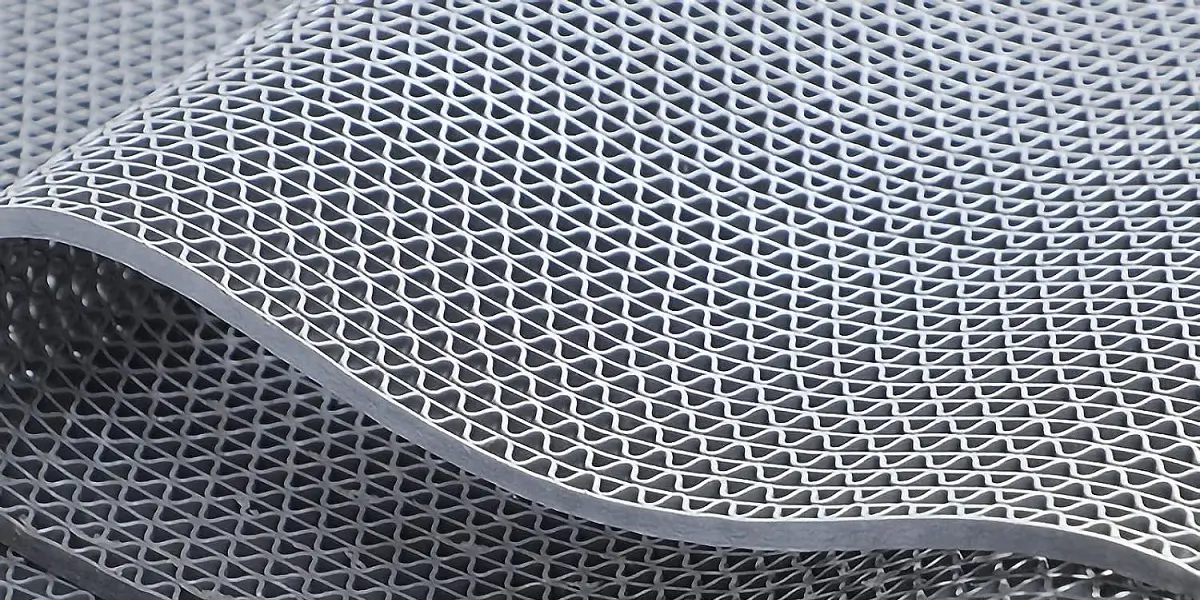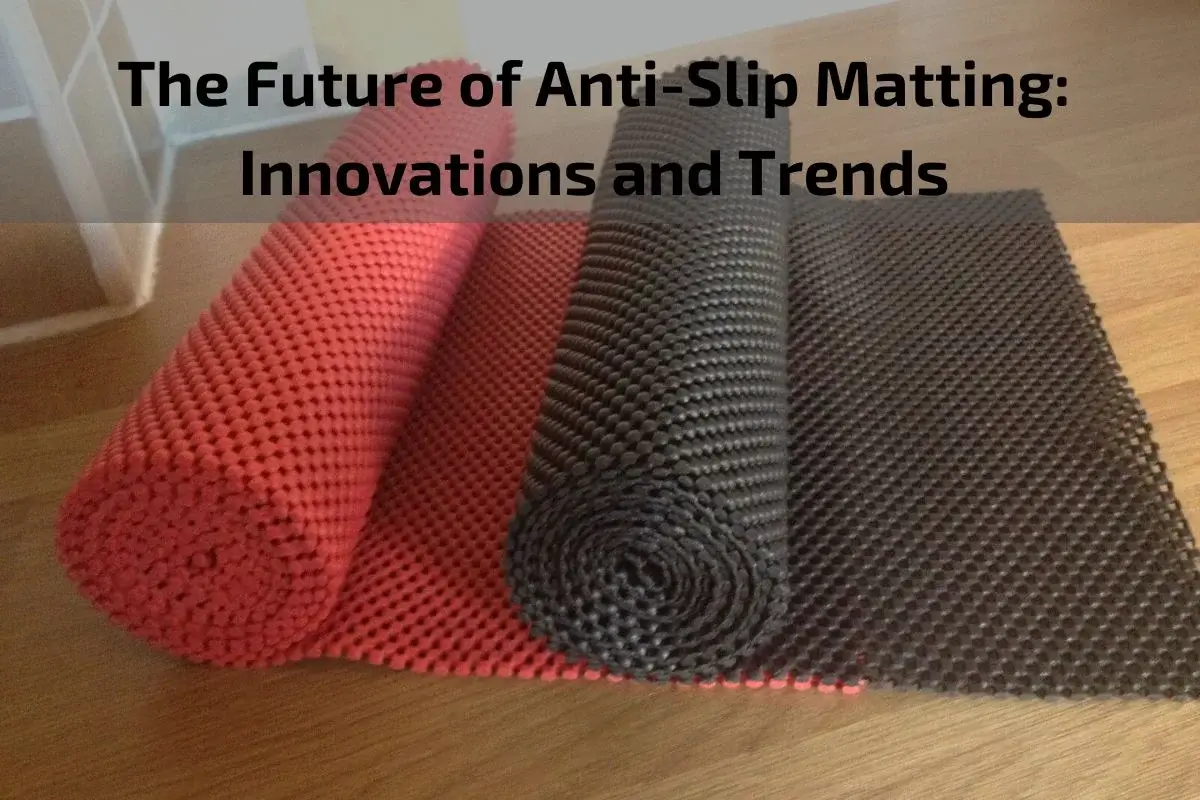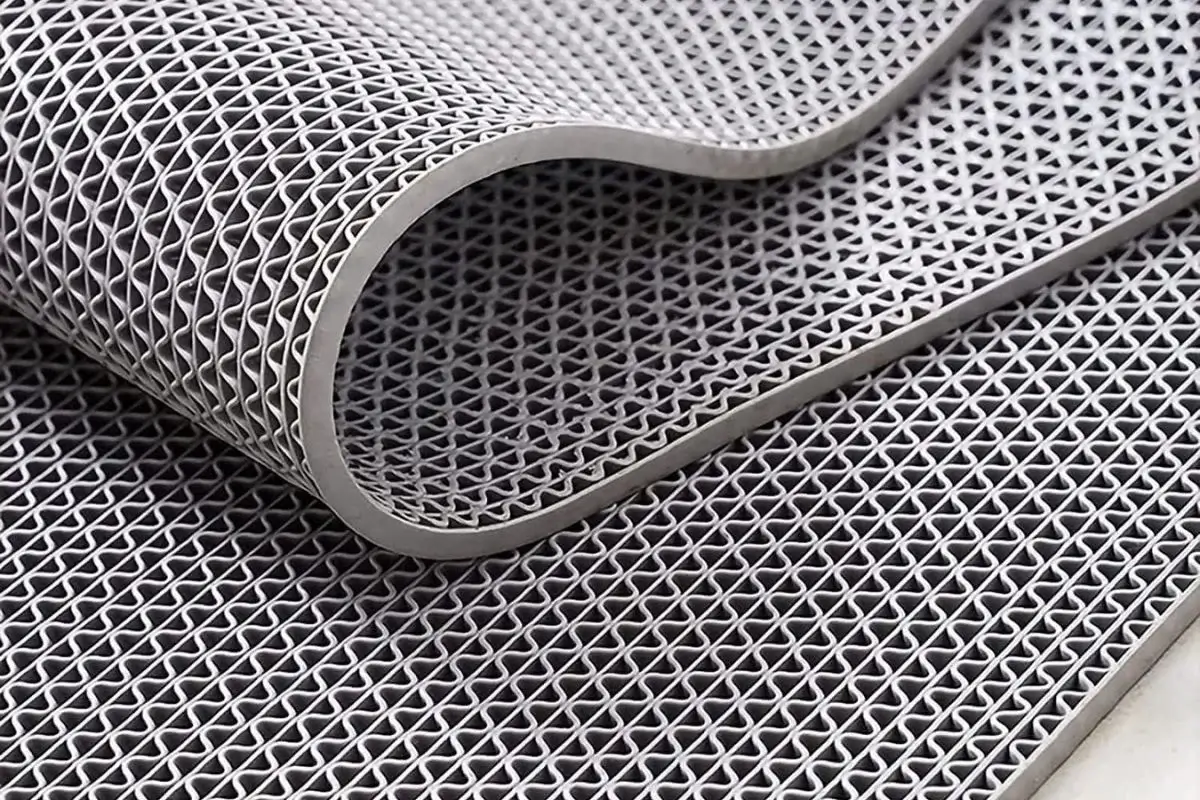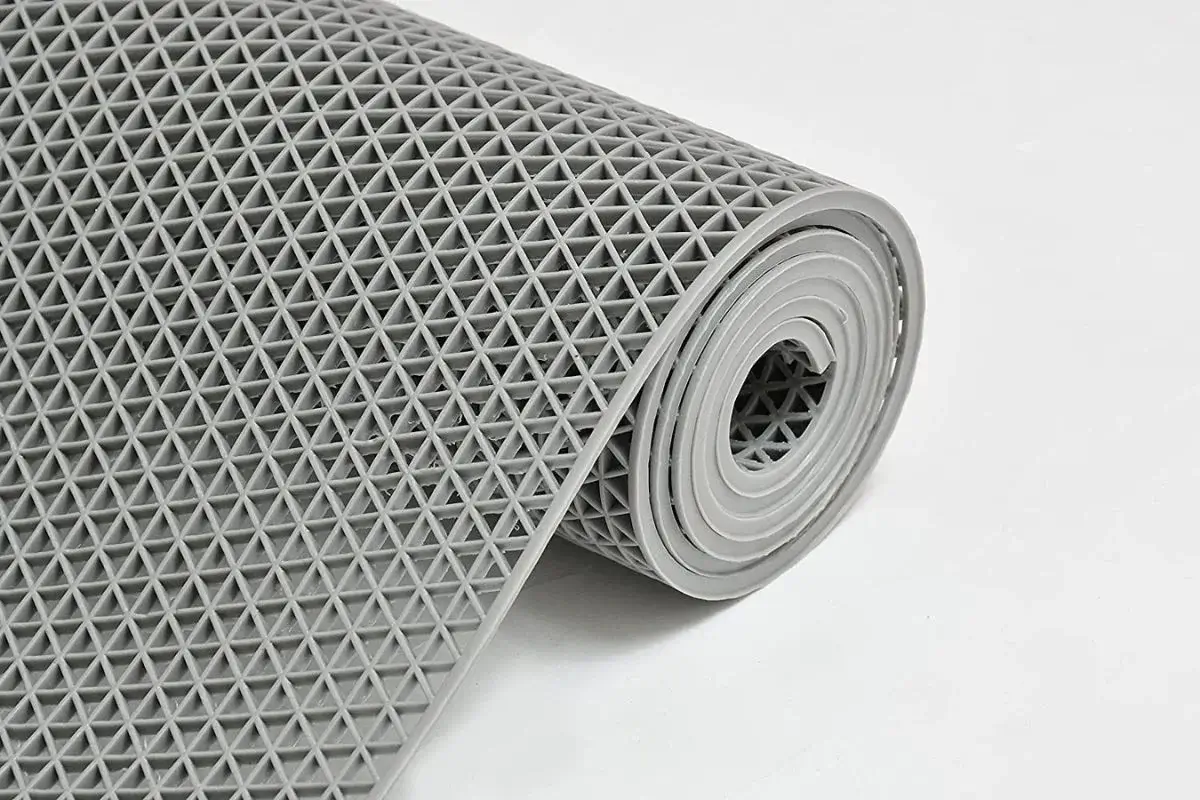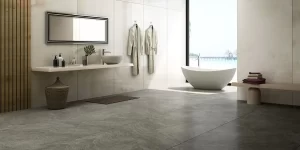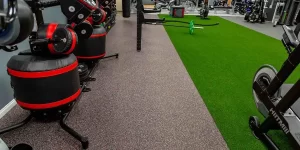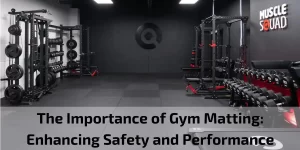As we navigate through a world increasingly focused on safety and well-being, the evolution of anti-slip matting stands at the forefront of innovation. From residential homes to industrial facilities, the demand for effective solutions to prevent slips and falls has never been more pressing. As such, the future of anti-slip matting is marked by a confluence of technological advancements, sustainable practices, and a deeper understanding of safety dynamics.
In this era of rapid change and progress, it’s essential to explore the emerging innovations and trends shaping the landscape of anti-slip matting. These developments not only enhance the functionality and efficacy of anti-slip solutions but also pave the way for safer, more accessible environments for individuals of all ages and abilities.
Join us as we delve into the future of anti-slip matting, where ingenuity meets necessity to create solutions that transcend traditional boundaries and redefine the standards of safety and security. From cutting-edge materials to smart technologies, the journey ahead promises to revolutionize the way we perceive and implement anti-slip measures in diverse settings.
Exploring the Role of Anti-Slip Matting in Preventing Accidents
In the hustle and bustle of everyday life, the risk of slip and fall accidents lurks around every corner. From residential homes to commercial establishments and industrial sites, the potential for accidents is ever-present, especially in areas where floors may become slippery due to moisture, spills, or other hazards. However, amidst this landscape of potential danger, anti-slip matting emerges as a silent guardian, playing a pivotal role in preventing accidents and promoting safety.
Anti-slip matting, also known as safety matting or slip-resistant mats, serves as a protective barrier between individuals and the slippery surfaces they traverse. But its role extends far beyond mere surface coverage. It embodies a commitment to safety, a dedication to accident prevention, and a recognition of the profound impact that even the smallest safety measure can have on the well-being of individuals and communities.
- Enhanced Traction and Grip: The primary function of anti-slip matting is to provide enhanced traction and grip, thereby reducing the risk of slips and falls. Constructed with specialized materials and surface textures, these mats create friction between footwear and the floor, minimizing the chances of accidents even in wet or slippery conditions.
- Protection Across Various Environments: Anti-slip matting finds its place in a diverse array of environments, from residential bathrooms and kitchens to commercial kitchens, entrances, and industrial workspaces. Its versatility allows it to adapt to different surfaces and usage requirements, offering reliable protection wherever it is needed most.
- Early Intervention and Accident Prevention: By placing anti-slip mats in strategic locations prone to spills or moisture accumulation, individuals and businesses take proactive steps to mitigate the risk of accidents before they occur. These mats serve as a first line of defense, providing a barrier between slippery surfaces and unsuspecting pedestrians.
- Safety Consciousness and Compliance: The presence of anti-slip matting reflects a culture of safety consciousness and regulatory compliance. In environments subject to safety standards and regulations, such as commercial establishments and workplaces, the use of anti-slip mats demonstrates a commitment to creating safe and secure environments for all occupants.
- Peace of Mind and Confidence: For individuals navigating their surroundings, the sight of anti-slip matting instills a sense of peace of mind and confidence. Knowing that safety measures are in place to minimize the risk of accidents fosters a sense of security and reassurance, allowing individuals to move with greater freedom and ease.
Definition and Purpose of Anti-Slip Matting
Anti-slip matting, also known as slip-resistant or safety matting, is a specialized type of flooring material designed to reduce the risk of slips, trips, and falls in various environments. It consists of durable materials with surface textures and patterns specifically engineered to provide enhanced traction and grip, even in wet or slippery conditions.
The primary purpose of anti-slip matting is to enhance safety and prevent accidents by minimizing the potential for slips and falls. These mats serve as a protective barrier between individuals and slippery surfaces, offering stability and support across a wide range of settings. Whether in residential, commercial, or industrial environments, anti-slip matting plays a crucial role in creating secure and accident-free spaces for occupants and visitors.
Beyond its role in accident prevention, anti-slip matting serves several key purposes:
- Enhanced Traction: Anti-slip matting is designed to increase traction and grip underfoot, reducing the likelihood of slips and falls, especially on smooth or wet surfaces.
- Protection of Floors: By providing a barrier between footwear and floor surfaces, anti-slip matting helps protect floors from damage caused by abrasion, moisture, and heavy foot traffic.
- Comfort and Support: Many types of anti-slip matting offer cushioning and support for individuals standing or walking for extended periods, reducing fatigue and discomfort.
- Versatility and Adaptability: Anti-slip matting is available in a variety of sizes, shapes, and materials to suit different environments and applications. From entryways and kitchen floors to industrial workspaces and outdoor areas, there is a suitable anti-slip matting solution for every need.
- Regulatory Compliance: In environments subject to safety regulations and standards, such as workplaces and public buildings, the use of anti-slip matting helps ensure compliance with safety requirements and reduces the risk of liability associated with slip and fall accidents.
Benefits of Anti-Slip Matting
Anti-slip matting offers a multitude of benefits that extend beyond mere surface traction. These specialized mats play a crucial role in enhancing safety, minimizing accidents, and promoting peace of mind in various environments. Here are several key benefits of anti-slip matting:
- Enhanced Safety: The primary benefit of anti-slip matting is its ability to reduce the risk of slips, trips, and falls. By providing enhanced traction and grip, these mats help individuals maintain their footing, even on wet, oily, or otherwise slippery surfaces.
- Accident Prevention: Slip and fall accidents can result in a wide range of injuries, from minor bruises to severe fractures and head trauma. Anti-slip matting helps prevent such accidents by minimizing the likelihood of slips and falls, thereby reducing the risk of injury for occupants and visitors.
- Protection of Property: In addition to safeguarding individuals, anti-slip matting also helps protect floors, surfaces, and furnishings from damage caused by slips and falls. By providing a cushioned barrier between footwear and floor surfaces, these mats help minimize wear and tear and extend the lifespan of flooring materials.
- Versatility and Adaptability: Anti-slip matting is available in a variety of sizes, shapes, and materials to suit different environments and applications. From entryways and kitchen floors to industrial workspaces and outdoor areas, there is a suitable anti-slip matting solution for every need.
- Comfort and Support: Many types of anti-slip matting offer cushioning and support for individuals standing or walking for extended periods. This helps reduce fatigue and discomfort, especially in environments where prolonged standing is common, such as retail spaces, kitchens, and industrial facilities.
- Regulatory Compliance: In environments subject to safety regulations and standards, such as workplaces and public buildings, the use of anti-slip matting helps ensure compliance with safety requirements. This reduces the risk of liability associated with slip and fall accidents and demonstrates a commitment to safety and well-being.
- Cost-Effectiveness: While the initial investment in anti-slip matting may seem significant, the long-term cost savings can be substantial. By preventing accidents and injuries, these mats help mitigate liability risks, lower insurance premiums, and minimize expenses associated with property damage and medical bills.
Types of Anti-Slip Matting
Anti-slip matting comes in a variety of types, each offering unique features and benefits tailored to specific environments and applications. Understanding the different types of anti-slip matting is essential for selecting the most suitable solution for safety and functionality. Here are several common types of anti-slip matting:
- Rubber Anti-Slip Mats:
- Features: Made from durable rubber materials, these mats offer excellent traction and grip on various surfaces. They are resistant to moisture, oils, and chemicals, making them ideal for indoor and outdoor use.
- Applications: Rubber anti-slip mats are commonly used in commercial kitchens, industrial facilities, gymnasiums, and outdoor walkways.
Vinyl Anti-Slip Mats:
- Features: Vinyl mats feature textured surfaces designed to enhance traction and prevent slips and falls. They are available in various colors, patterns, and thicknesses to suit different aesthetic preferences and usage requirements.
- Applications: Vinyl anti-slip mats are suitable for entryways, corridors, locker rooms, and other high-traffic areas where safety is a priority.
Carpet Anti-Slip Mats:
- Features: Carpet mats feature a textured surface that provides traction while maintaining the aesthetic appeal of carpeted floors. They are designed to resist stains, mold, and mildew, making them suitable for indoor use.
- Applications: Carpet anti-slip mats are commonly used in office buildings, retail stores, hotels, and residential settings to prevent slips and falls on carpeted surfaces.
Specialty Anti-Slip Mats:
- Features: Specialty anti-slip mats are designed for specific applications or environments. They may feature unique materials, construction, or properties tailored to meet the demands of specialized settings.
- Applications: Specialty anti-slip mats include drainage mats for wet areas, electrical safety mats for workplaces with electrical hazards, and ergonomic mats for standing workstations.
Interlocking Anti-Slip Tiles:
- Features: Interlocking tiles offer a modular anti-slip flooring solution that can be customized to fit any space. They feature interlocking edges that allow for easy installation and removal, making them ideal for temporary or permanent flooring needs.
- Applications: Interlocking anti-slip tiles are commonly used in garages, workshops, play areas, and outdoor patios to create durable and slip-resistant surfaces.
Benefits of Anti-Slip Matting
Anti-slip matting offers a multitude of benefits that extend beyond mere surface traction. These specialized mats play a crucial role in enhancing safety, minimizing accidents, and promoting peace of mind in various environments. Here are several key benefits of anti-slip matting:
- Enhanced Safety: The primary benefit of anti-slip matting is its ability to reduce the risk of slips, trips, and falls. By providing enhanced traction and grip, these mats help individuals maintain their footing, even on wet, oily, or otherwise slippery surfaces.
- Accident Prevention: Slip and fall accidents can result in a wide range of injuries, from minor bruises to severe fractures and head trauma. Anti-slip matting helps prevent such accidents by minimizing the likelihood of slips and falls, thereby reducing the risk of injury for occupants and visitors.
- Protection of Property: In addition to safeguarding individuals, anti-slip matting also helps protect floors, surfaces, and furnishings from damage caused by slips and falls. By providing a cushioned barrier between footwear and floor surfaces, these mats help minimize wear and tear and extend the lifespan of flooring materials.
- Versatility and Adaptability: Anti-slip matting is available in a variety of sizes, shapes, and materials to suit different environments and applications. From entryways and kitchen floors to industrial workspaces and outdoor areas, there is a suitable anti-slip matting solution for every need.
- Comfort and Support: Many types of anti-slip matting offer cushioning and support for individuals standing or walking for extended periods. This helps reduce fatigue and discomfort, especially in environments where prolonged standing is common, such as retail spaces, kitchens, and industrial facilities.
- Regulatory Compliance: In environments subject to safety regulations and standards, such as workplaces and public buildings, the use of anti-slip matting helps ensure compliance with safety requirements. This reduces the risk of liability associated with slip and fall accidents and demonstrates a commitment to safety and well-being.
- Cost-Effectiveness: While the initial investment in anti-slip matting may seem significant, the long-term cost savings can be substantial. By preventing accidents and injuries, these mats help mitigate liability risks, lower insurance premiums, and minimize expenses associated with property damage and medical bills.
Types of Anti-Slip Matting
Anti-slip matting comes in a variety of types, each offering unique features and benefits tailored to specific environments and applications. Understanding the different types of anti-slip matting is essential for selecting the most suitable solution for safety and functionality. Here are several common types of anti-slip matting:
- Rubber Anti-Slip Mats:
- Features: Made from durable rubber materials, these mats offer excellent traction and grip on various surfaces. They are resistant to moisture, oils, and chemicals, making them ideal for indoor and outdoor use.
- Applications: Rubber anti-slip mats are commonly used in commercial kitchens, industrial facilities, gymnasiums, and outdoor walkways.
Vinyl Anti-Slip Mats:
- Features: Vinyl mats feature textured surfaces designed to enhance traction and prevent slips and falls. They are available in various colors, patterns, and thicknesses to suit different aesthetic preferences and usage requirements.
- Applications: Vinyl anti-slip mats are suitable for entryways, corridors, locker rooms, and other high-traffic areas where safety is a priority.
Carpet Anti-Slip Mats:
- Features: Carpet mats feature a textured surface that provides traction while maintaining the aesthetic appeal of carpeted floors. They are designed to resist stains, mold, and mildew, making them suitable for indoor use.
- Applications: Carpet anti-slip mats are commonly used in office buildings, retail stores, hotels, and residential settings to prevent slips and falls on carpeted surfaces.
Specialty Anti-Slip Mats:
- Features: Specialty anti-slip mats are designed for specific applications or environments. They may feature unique materials, construction, or properties tailored to meet the demands of specialized settings.
- Applications: Specialty anti-slip mats include drainage mats for wet areas, electrical safety mats for workplaces with electrical hazards, and ergonomic mats for standing workstations.
Interlocking Anti-Slip Tiles:
- Features: Interlocking tiles offer a modular anti-slip flooring solution that can be customized to fit any space. They feature interlocking edges that allow for easy installation and removal, making them ideal for temporary or permanent flooring needs.
- Applications: Interlocking anti-slip tiles are commonly used in garages, workshops, play areas, and outdoor patios to create durable and slip-resistant surfaces.
Installation and Maintenance Tips for Anti-Slip Matting
Proper installation and regular maintenance are essential to ensure the effectiveness and longevity of anti-slip matting. Whether in residential, commercial, or industrial settings, following best practices can help maximize safety and performance. Here are some installation and maintenance tips for anti-slip matting:
Installation Guidelines:
Surface Preparation: Ensure the floor surface is clean, dry, and free of debris before installing anti-slip matting. Remove any existing adhesive residue or contaminants that may affect adhesion.
Cutting and Fitting: Measure and cut the anti-slip matting to fit the desired area accurately. Use sharp utility knives or scissors to achieve clean, precise cuts.
Adhesive Application: Apply adhesive as recommended by the manufacturer, ensuring even coverage across the entire surface of the matting. Follow instructions regarding curing time and temperature for optimal bonding.
Securing the Matting:
- Use of Edging or Ramp Profiles: Install edging or ramp profiles where necessary to provide a smooth transition between the anti-slip matting and surrounding surfaces. This helps prevent tripping hazards and ensures a secure fit.
Anchor Points: Secure the anti-slip matting in place using anchor points or adhesive strips to prevent shifting or curling at the edges.
Regular Maintenance Practices:
Daily Cleaning: Establish a routine cleaning schedule to remove dirt, debris, and spills from the surface of the anti-slip matting. Use a mild detergent or soap solution and a soft-bristle brush or mop for effective cleaning.
Deep Cleaning: Periodically deep clean the anti-slip matting using specialized cleaning solutions or equipment, especially in high-traffic areas or environments prone to spills and stains.
Drying and Ventilation: Ensure the anti-slip matting is thoroughly dried after cleaning to prevent mold, mildew, and bacterial growth. Adequate ventilation helps promote airflow and hasten the drying process.
Inspection and Repair: Regularly inspect the anti-slip matting for signs of wear, damage, or deterioration. Repair or replace damaged sections promptly to maintain optimal performance and safety.
Safety Precautions:
Personal Protective Equipment (PPE): Wear appropriate PPE, such as gloves and safety goggles, when handling cleaning chemicals or performing maintenance tasks.
Slip Hazards: Be aware of slip hazards created by wet or soapy surfaces during cleaning. Use caution and signage to alert individuals to potential hazards and prevent accidents.
Documentation and Record Keeping:
Maintenance Logs: Keep detailed records of maintenance activities, including cleaning schedules, repairs, and inspections. Documentation helps track the condition of the anti-slip matting and ensures compliance with safety regulations.
Conclusion
In conclusion, anti-slip matting stands as a crucial element in enhancing safety, preventing accidents, and promoting well-being in various environments. Through its unique properties and functionality, anti-slip matting offers a multitude of benefits, including enhanced traction, accident prevention, and protection of property.

